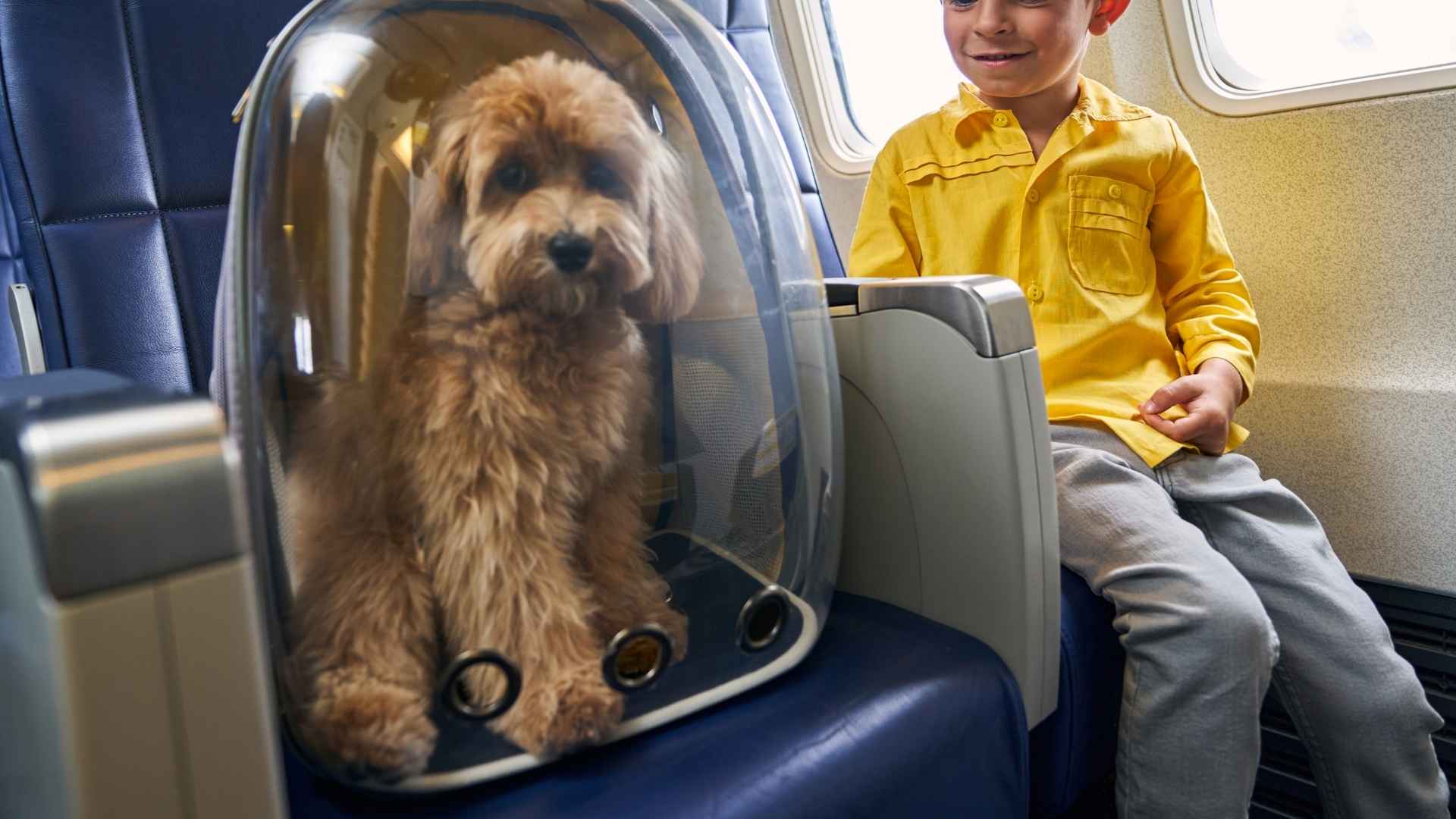When you are a frequent flyer, you know too well when you’re settling into your airplane seat with your canine companion resting peacefully below. This scenario becomes a reality when you choose the right dog breed for air travel.
Flying with dogs creates anxiety for many pet owners. Being concerned about barking, restlessness, and your fellow passenger’s comfort are all valid worries. However, certain breeds possess natural temperaments that make cabin travel surprisingly smooth.
Dog Breeds That Stay Silent in Airplane Cabins
Choosing the right breed makes all the difference in the world between stress and serenity. These nine breeds have calm behaviors and quiet dispositions. Centuries of selective breeding created pets perfectly suited for modern cabin environments, where space is limited.
1. Basenji
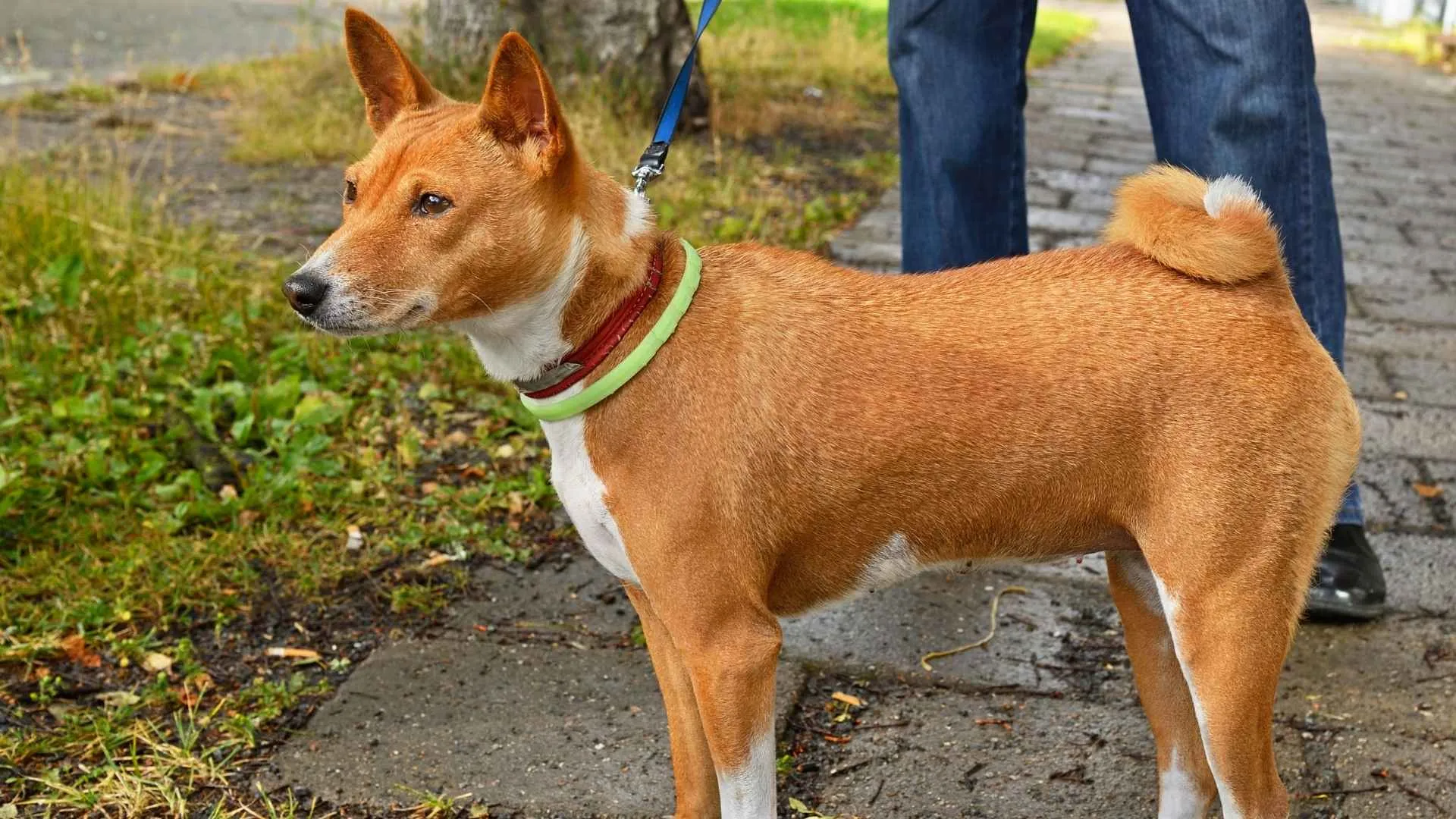
Central African hunters needed dogs that could track prey without barking. This necessity created the Basenji, a breed so naturally quiet that flight attendants often forget there’s a dog on board.
Basenjis cannot bark traditionally. They communicate through distinct yodels that rarely emerge during travel. Their calm, observant nature takes over in confined spaces.
They have a cat-like independence, which means they are comfortable spending hours quietly watching without needing constant reassurance.
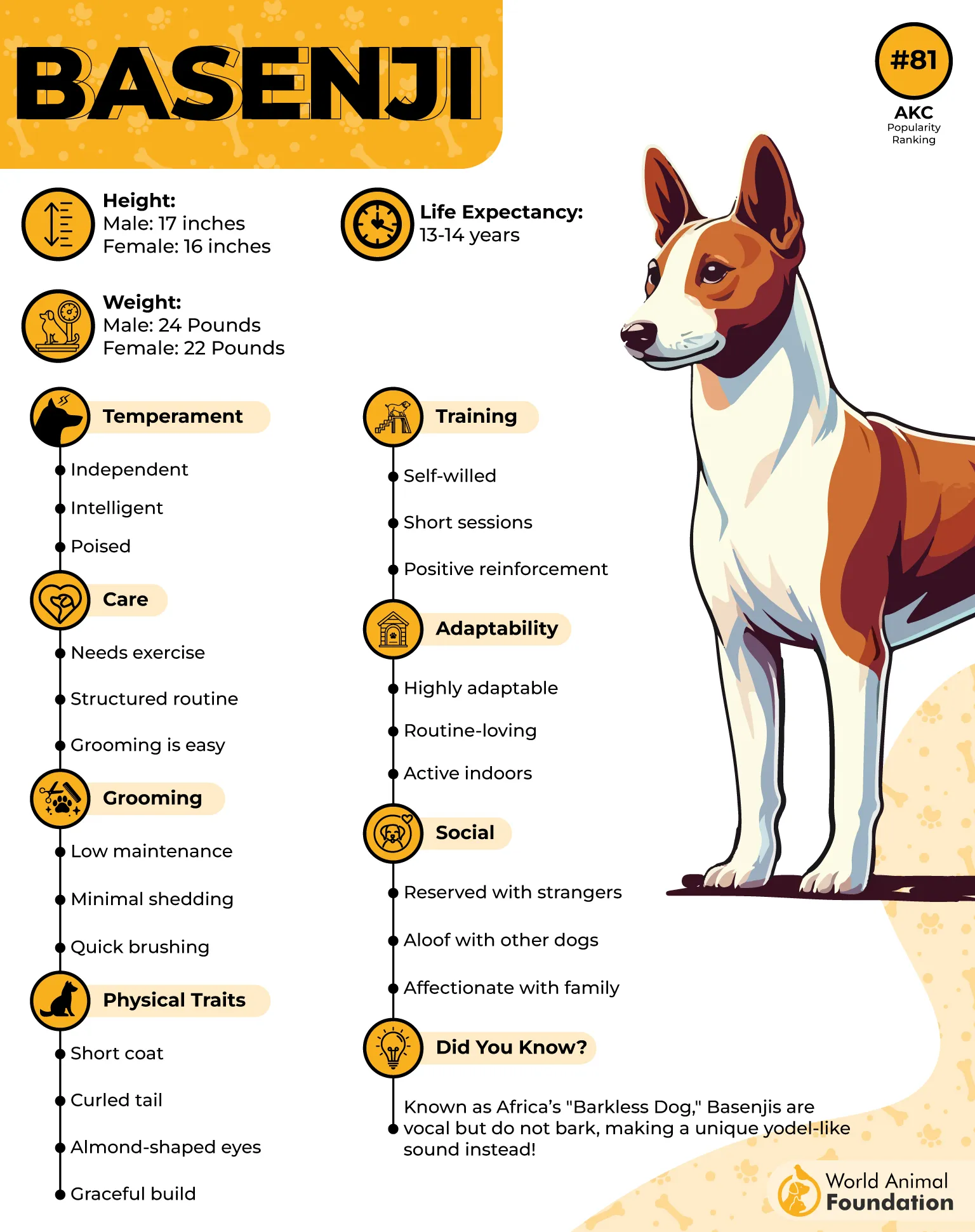
Essential Travel Details
Height: 16-17 inches
Weight: 22-24 pounds
Vocalization: Virtually silent (soft yodels instead of barking)
Carrier requirements: Medium to large soft-sided carriers with mesh ventilation
Pre-flight tips: A brief energy session with a flirt pole five minutes before boarding helps your pets settle. Once tucked under the seat, most Basenjis observe their surroundings with curiosity.
Their lean build fits comfortably in standard carrier sizes. Grooming them before a flight reduces the chance of them getting restless because of irritation.
2. Cavalier King Charles Spaniel
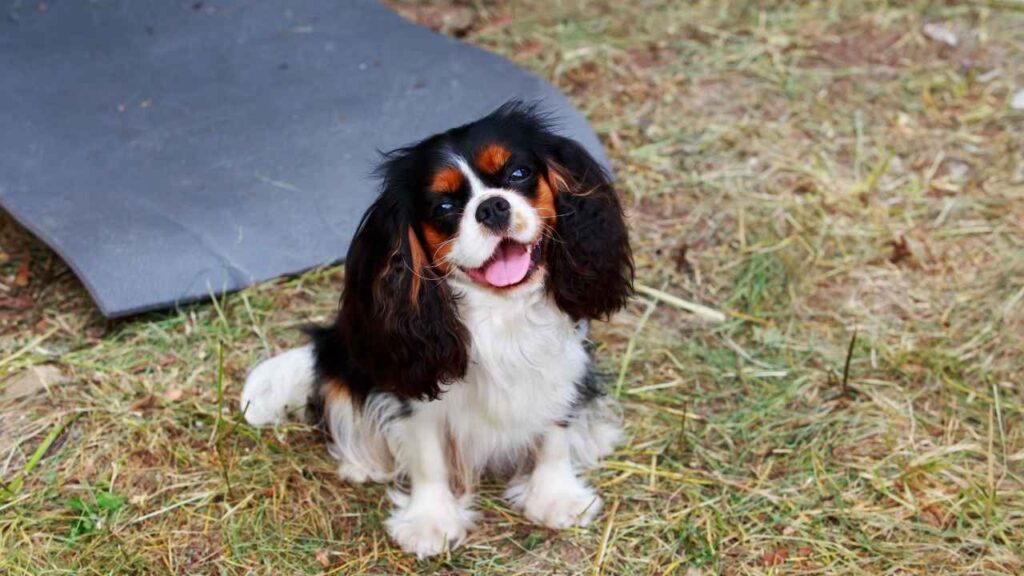
European nobility needed companions for long carriage journeys across challenging terrain. They required dogs that provided comfort without adding travel stress. The Cavalier King Charles Spaniels emerged as the perfect solution.
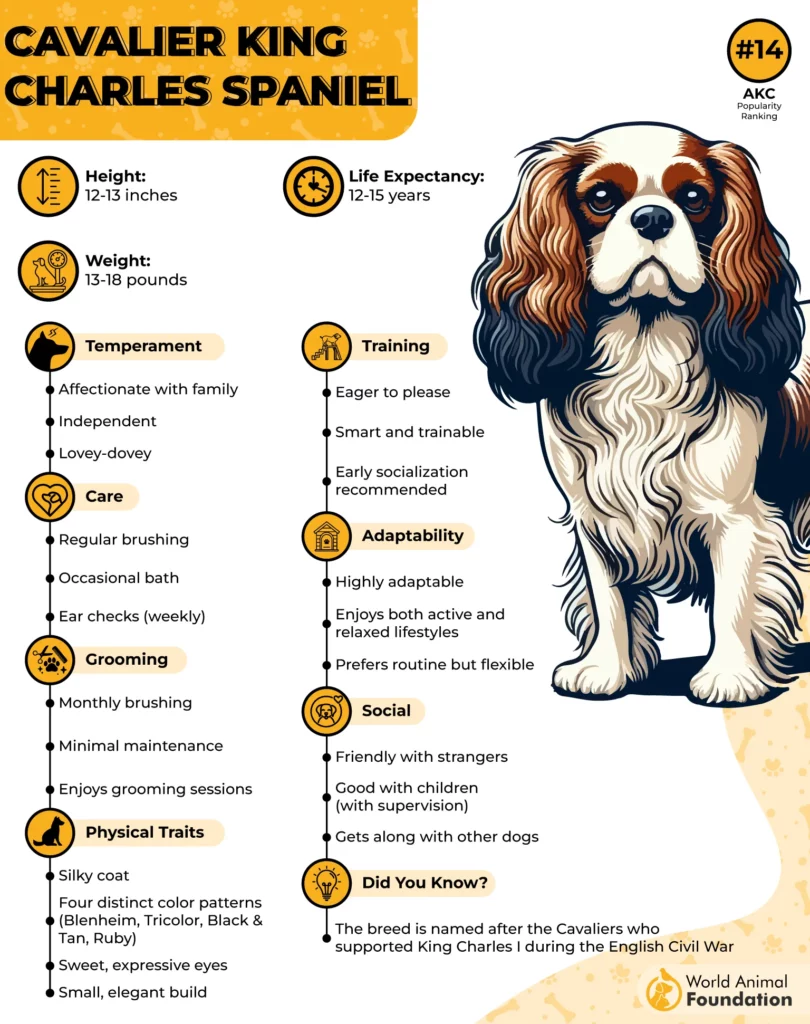
These gentle dogs understand intuitively that travel requires patience. Their steady heartbeat and warm presence help anxious owners relax. There is something profoundly soothing about feeling the quiet, steady breathing of these small dogs during takeoff.
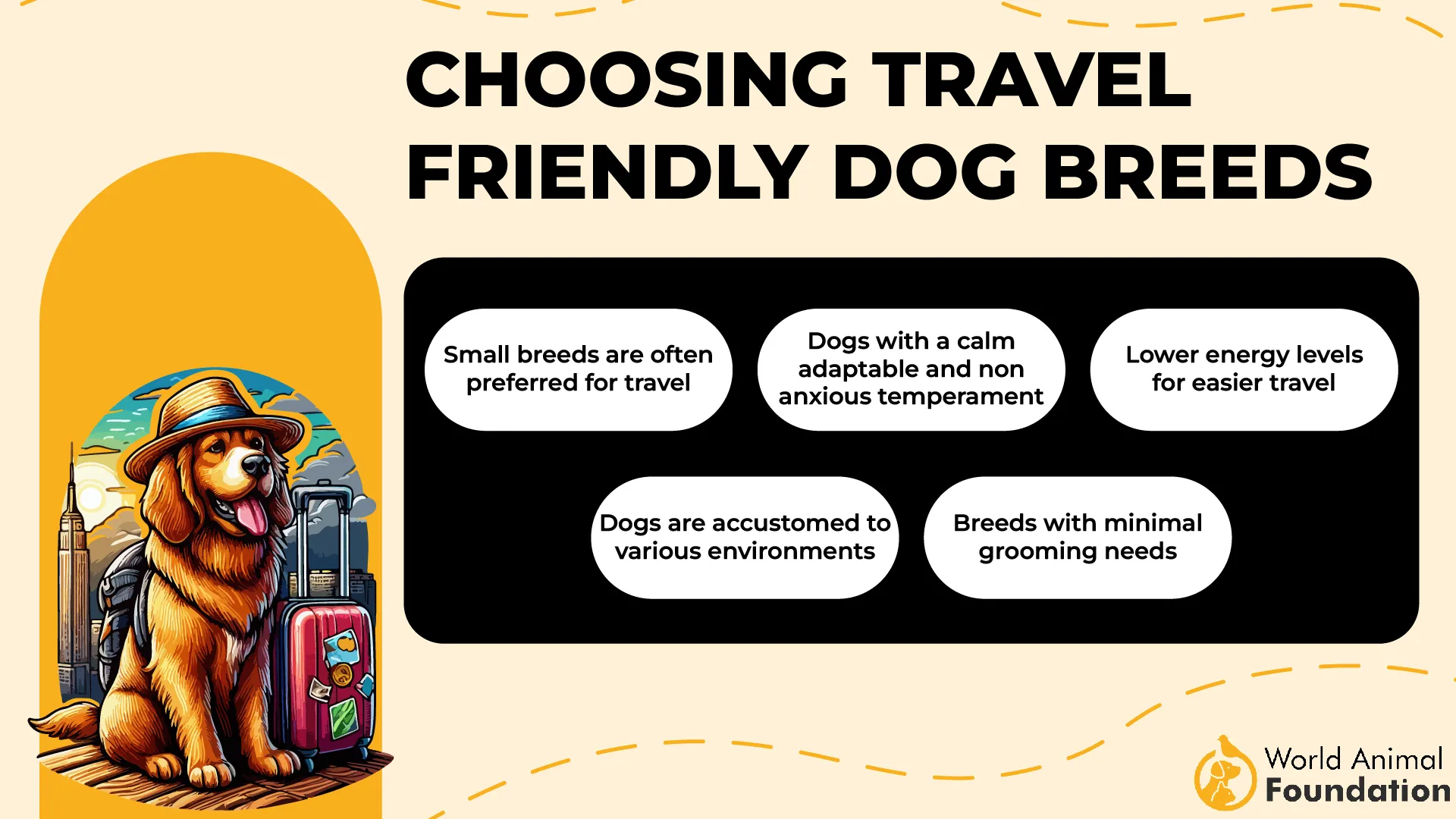
Essential Travel Details
Height: 12-13 inches
Weight: 13-18 pounds
Vocalization: Occasional soft alerts only
Carrier requirements: Standard, small, or medium carrier size
Pre-flight tips: A frozen lick mat, fifteen minutes before boarding, keeps them quietly occupied during the chaotic boarding process. The American Kennel Club (AKC) ranks Spaniels as the 13th most popular breed.
3. Maltese

Wealthy Mediterranean families treasured these compact-sized pets for over two millennia. They valued the perfect combination of beauty, intelligence, and adaptable nature. Today’s Maltese inherited this legacy of serene companionship.
Their featherweight build barely registers in carriers. Hypoallergenic coats produce minimal dander that fellow passengers appreciate. Maltese possess an intuitive ability to read their owner’s mood and adjust energy accordingly.
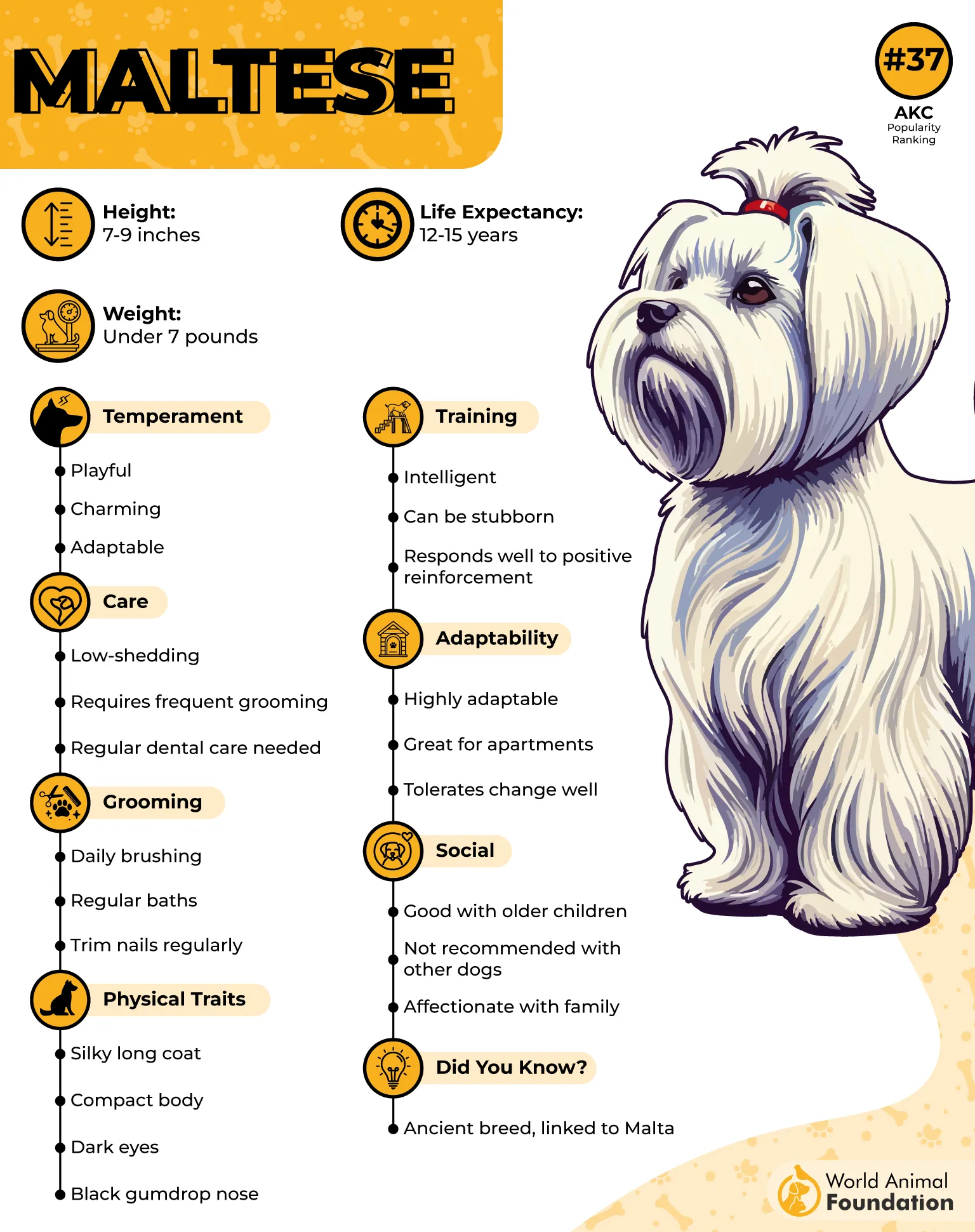
Essential Travel Details
Height: 7-9 inches
Weight range: under 7 pounds
Vocalization: Can be vocal when stressed
Carrier requirements: Small-sized carrier, preferably with a removable fleece
Flying tips: Pack a small snuffle toy filled with tiny treats. Quiet searching activities keep them engaged during ascent and descent, preventing anxiety-driven behaviors.
Having a familiar-smelling item in its travel crate and avoiding thick blankets, fluffy towels, or cloth items can be lifesavers in long flights.
4. Havanese
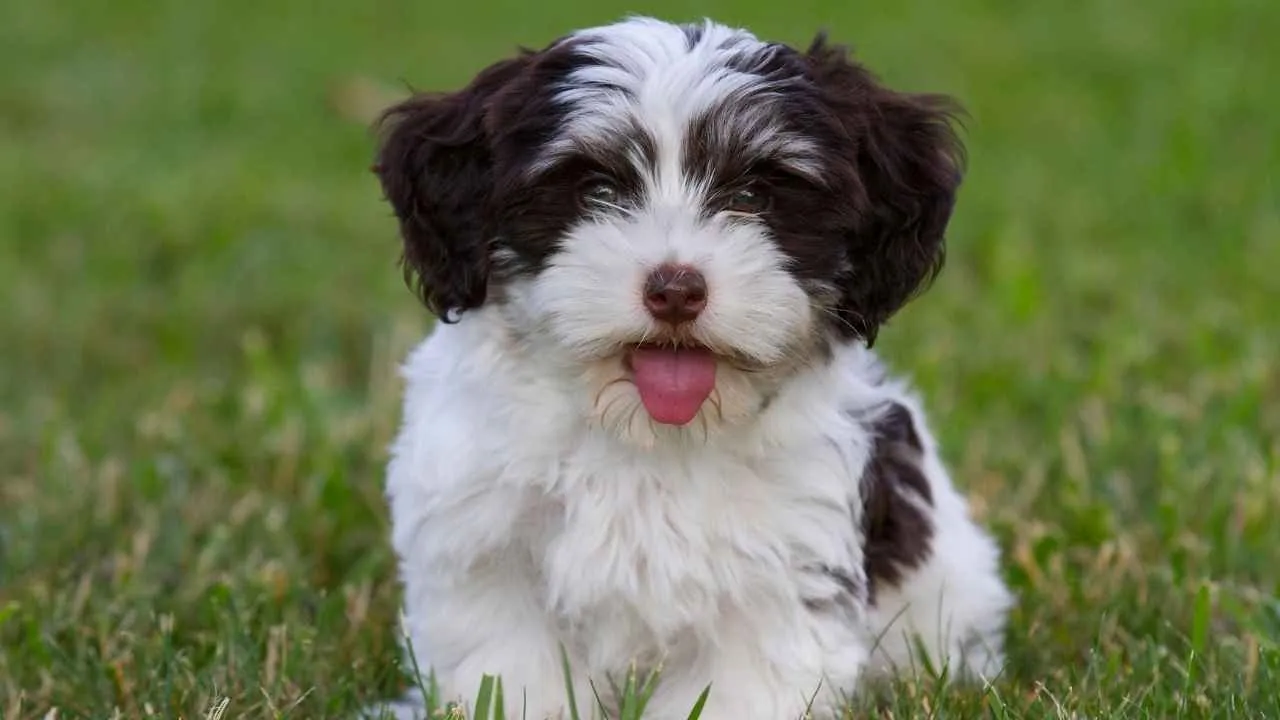
Cubans needed furry friends for social travels throughout the Caribbean. They developed a breed that thrived on human closeness while adapting to new environments.
The Havanese is one of the best dog breeds for international flights due to their friendly nature and sociability; they make air travel a stress-free experience.
Their people-pleasing nature means they look to their owners for behavioral cues during unfamiliar situations. When you remain calm, they mirror that energy. This creates a positive feedback loop, benefiting both you and your furry friend throughout the journey.
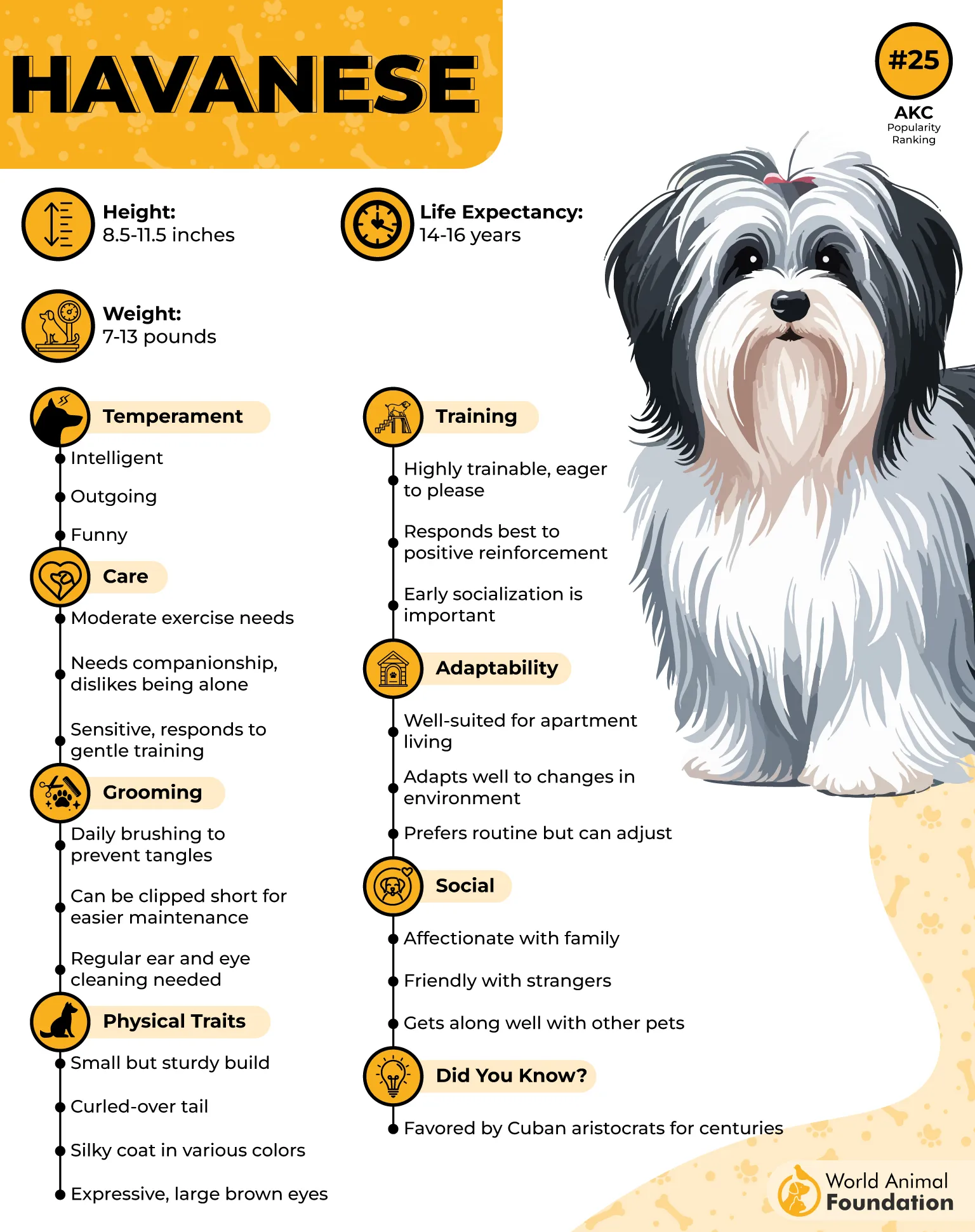
Essential Travel Details
Height: 8.5-11.5 inches
Weight: 7-13 pounds
Vocalization: Low to moderate, quickly settles when near their owners
Carrier requirements: Most airline-approved carriers do the job
Fun fact: Just eleven foundation dogs rebuilt the entire US Havanese population in the 1950s.
Boarding preparation: Prepare the required documents, such as health certificates and medication, beforehand to avoid a stressful experience. You can also teach your pets simple “watch, sit, wait” commands to make the process stress-free and ensure a smooth journey.
5. Bichon Frise
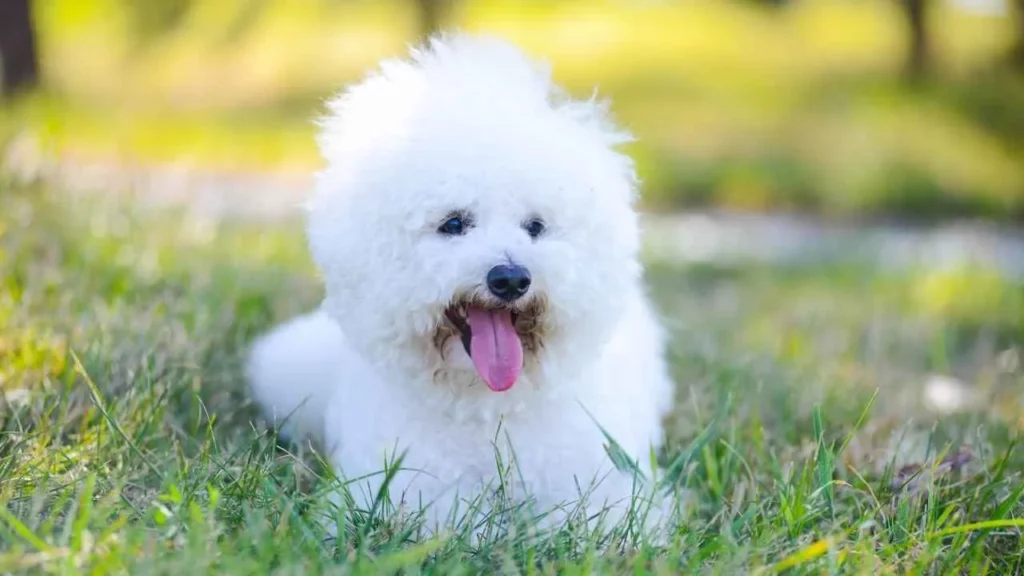
European circus trainers prized the Bichon Frise for an unusual talent. They could perform complex acrobatic routines in complete silence. This remarkable composure while entertaining crowds translates perfectly to modern travel situations.
Their natural cheerful attitude means they approach new experiences with curiosity rather than anxiety. They show initial interest in boarding activities but settle quickly once they understand the routine. Because of their temperaments, they handle long flights easily.
It is important to note that there are some airline policies regarding the weight limit for pets. Make sure to check in with your chosen airline before setting off on your travels.
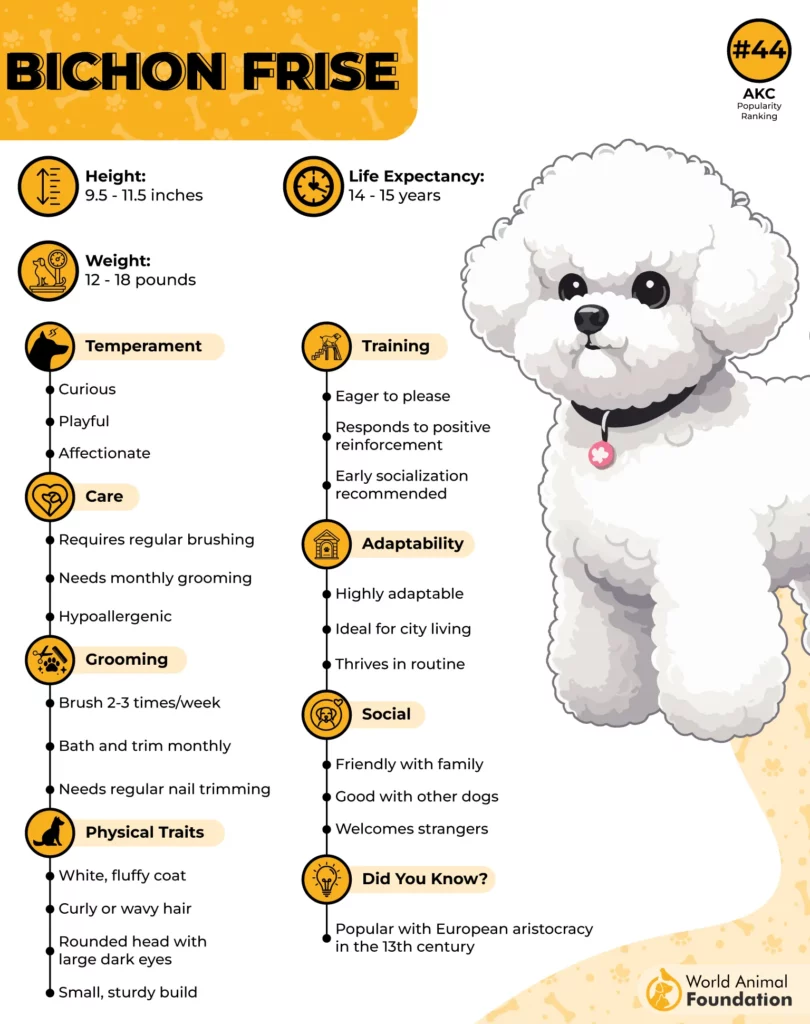
Essential Travel Details
Height: 9.5-11.5 inches
Weight: 12-18 pounds
Vocalization: Moderate barking, can increase if anxious
Carrier requirements: Small airline-friendly carriers
Flying tips: The Bichon Frise’s fluffy coat can become problematic in warm cabin situations. Remember to choose carriers with cooling gel pads for flights longer than three hours.
6. Italian Greyhound

The Italian Greyhound is well-suited for air travel because of their compact size and elegant nature. These miniature pets have an amazing ability to shift from high-energy alertness to staying calm and just napping for long flights.
Despite their delicate appearances, Italian Greyhounds adapt surprisingly well to travel stress. Due to their incredible speed capacity, these energetic pets can burn all that nervous energy with one brief pre-flight walk, making pet travel stress-free.

Essential Travel Details
Height: 13-15 inches
Weight: 7-14 pounds
Vocalization: Low to moderate barking, depending on the pup’s mental state
Carrier requirements: Any small airline-compliant carrier
Flying tip: The Greyhounds’ thin, short coat makes them extremely sensitive to the plane’s air conditioning. Always pack a lightweight fleece blanket, and remember that proper preparations are the difference between stressful plane travel and a calm one.
7. Shih Tzu
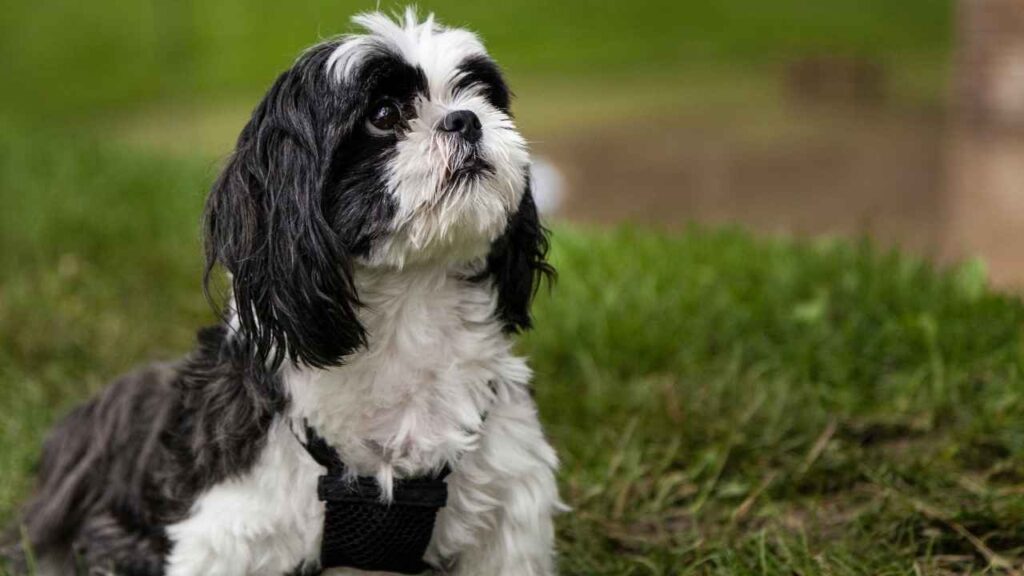
Shih Tzu once roamed the courts of Chinese imperial palaces without causing a ruckus or disturbing the court proceedings. Centuries of selective breeding created the Shih Tzu to be a graceful dog breed that remains calm no matter the situation.
Now, plane cabins might not have similar environments to palaces, but they do have one thing in common: the need to remain calm and collected during the flight.
This dog breed is for people who travel frequently and want good company during those long plane trips. Depending on the weight limit of the plane, most airlines allow them to fly in the cabin.
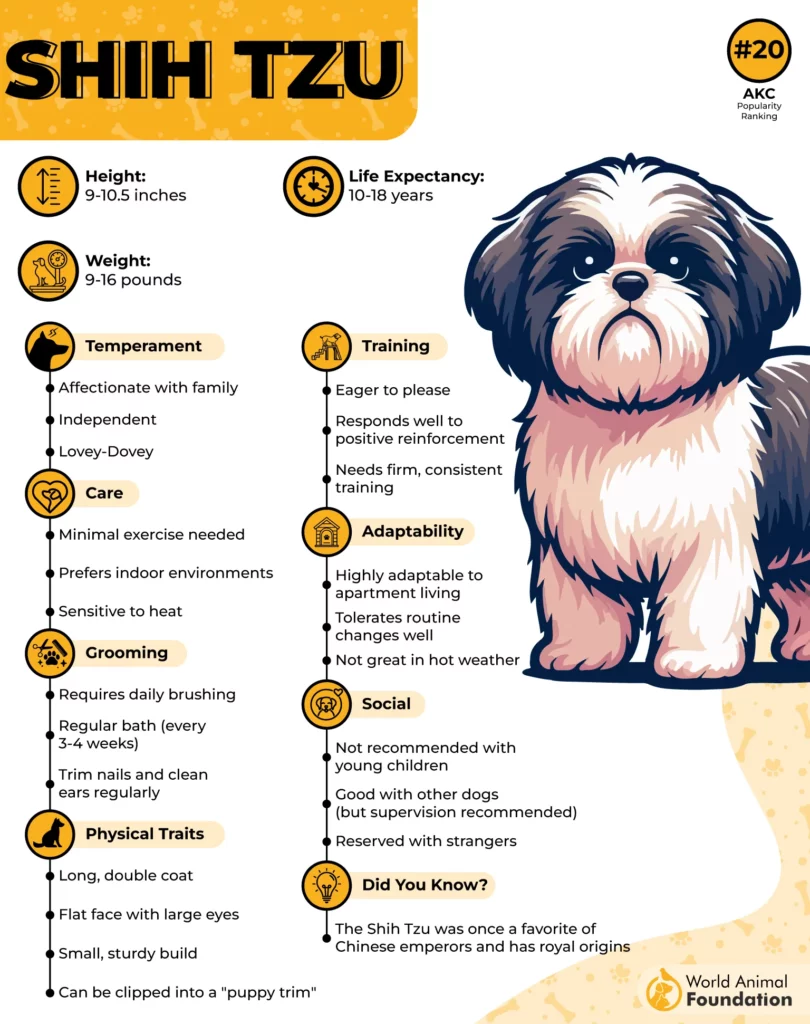
Essential Travel Details
Height: 9-10.5 inches
Weight: 9-16 pounds
Vocalization: Moderate barks when uneasy, followed by quiet cuddling
Carrier requirements: Preferably multi-sided mesh for airflow because of their snub noses
Preparation tips: PetMD mentions consulting your vet about breathing considerations before flying, as their snub noses can create issues for them. Most Shih Tzus handle cabin pressure well, but it’s better to be safe than sorry.
8. Lhasa Apso
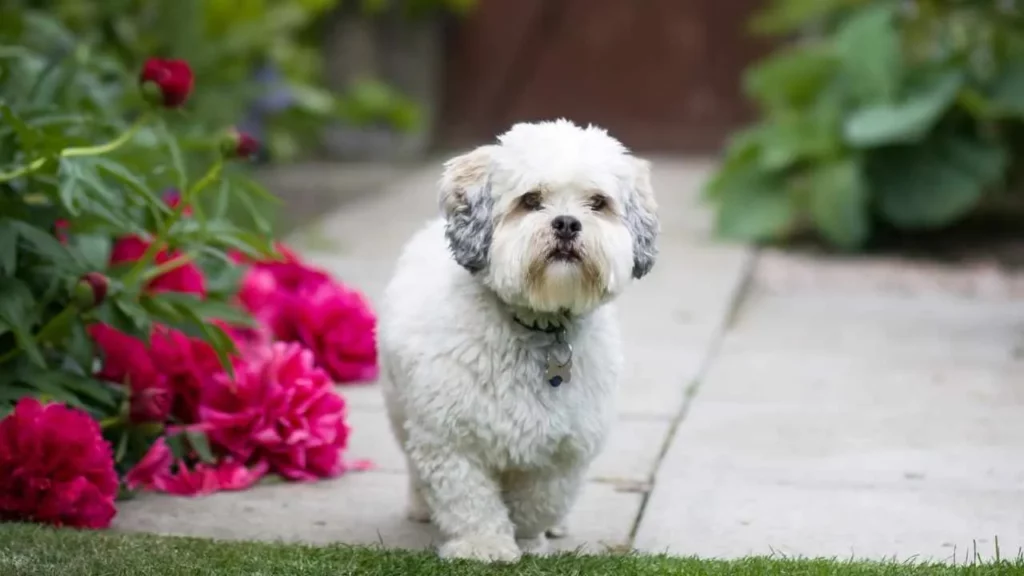
The Lhasa Apso was once used to guard the Tibetan temple courtyards while making sure not to disturb the meditating monks. Since a young age, these pups were raised to be watchful yet calm under pressure. Due to this nature, these dogs are perfect for flying in planes.
Originating from the mountains makes pressurized cabins feel like second nature to them. Their dense coats naturally muffle movement sounds within the carriers.
Remember to check the airline policies in advance regarding pets and weight limits, because the Lhasa Apso is considered a relatively large dog according to airlines.
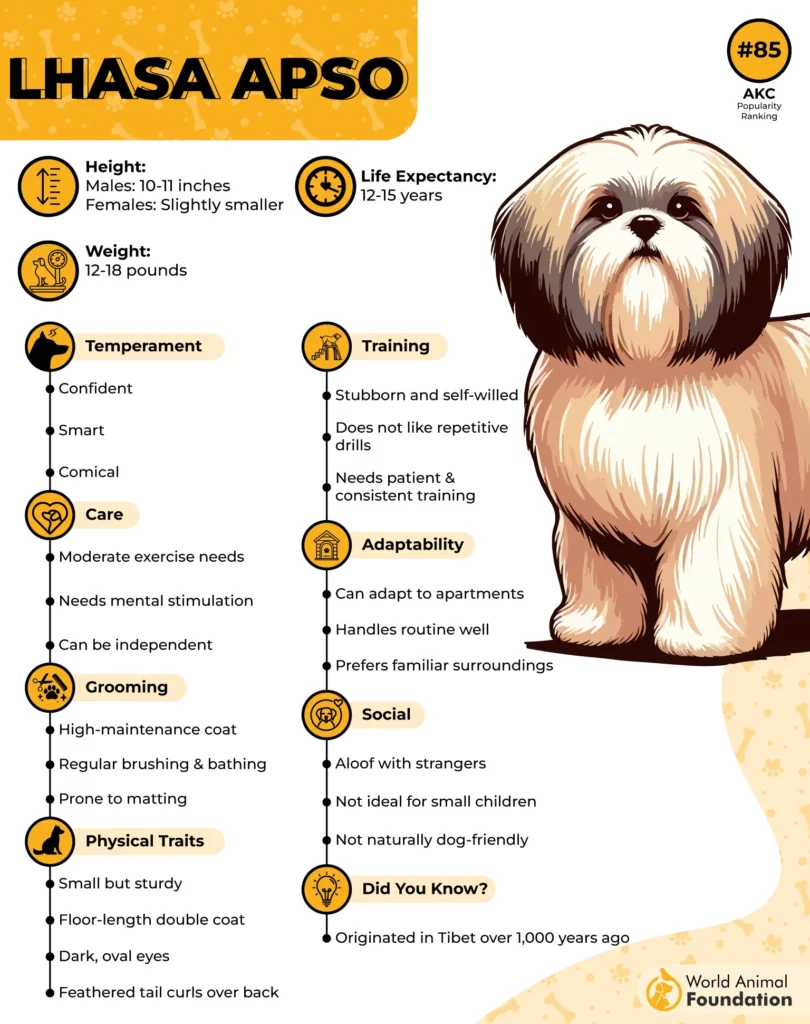
Essential Travel Details
Height: 10-11 inches
Weight: 12-18 pounds
Vocalization: Moderate barking
Carrier requirements: Hard-sided carriers
Pre-flight tips: Trim facial hair before travel to prevent eye irritation during pressure changes and descent. You should also do a brief scent-tracking session through different terminals to keep your pup relaxed.
9. Japanese Chin
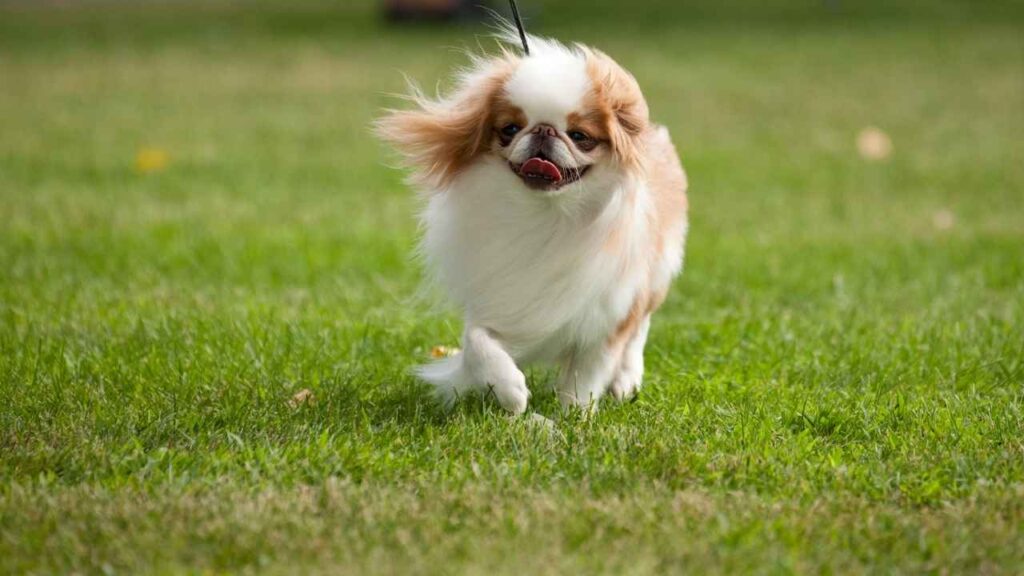
The Japanese Chin is small and one of the quietest breeds that fit comfortably under airline seats and rarely ever causes a stir during flights. Bred for royalty, these pets have a calm, dignified presence and are known for minimal barking.
Purina also notes that their cat-like grooming habits and low exercise needs make them easy to care for on the go. Their flat faces mean they’re best suited for cooler, stress-free flights.
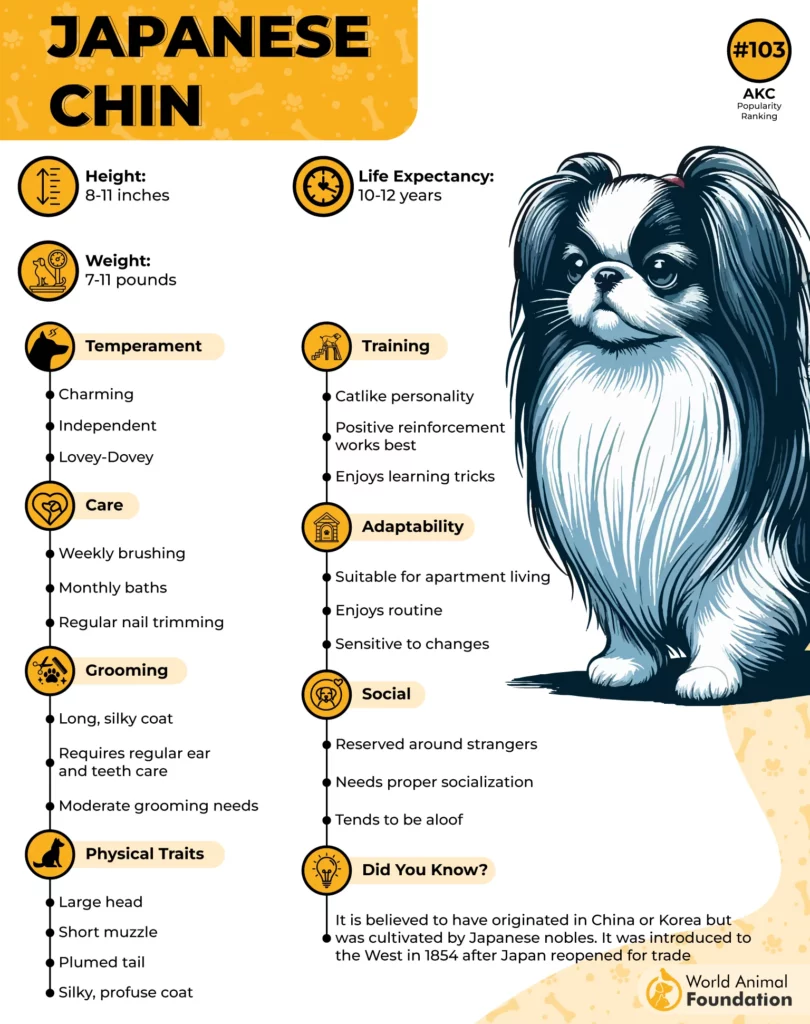
Essential Travel Details
Height: 8-11 inches
Weight: 7-11 pounds
Vocalization: Very low
Carrier requirements: Standard small-sized carrier
Flying preparations: Make sure to visit your vet to get relevant blood tests and parasite treatment done. Practice staying calm with your dog through exercises and mental stimulation.
Conclusion
The perfect travel companions combine natural temperaments, appropriate size, and individual personality. Each dog breed on this list brings unique advantages. At the end of the day, consider your travel style, destination requirements, and personal preferences when selecting your flying companion.
Prepare accordingly to your pets’ needs by booking direct flights, scheduling veterinary health clearances, practicing carrier training, and preparing required documentation. And remember that individual dogs within breeds can vary, so spend time with your potential pets before booking that vacation.


